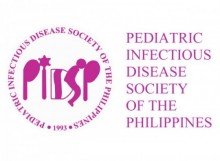Journal 2020 Vol.21 No.2
Oral Azithromycin Vs Intravenous Ceftriaxone in the Treatment of Enteric Fever: A Systematic Review and Meta-Analysis
Mark Jensen C. Sy, M.D., Florentina U. Ty, M.D.
Abstract
Background: Typhoid fever, also known as enteric fever, is a severe systemic illness characterized by fever and gastrointestinal manifestations that commonly affects children and young adults. It is most prevalent in SouthCentral Asia, Southern Africa, and Southeast Asia. Alternative drugs for the treatment of enteric fever have been studied to decrease toxicity and increase compliance. Oral azithromycin has been proposed and is widely studied as a suitable treatment alternative.
Objective: The objective of this study is to compare oral azithromycin with intravenous ceftriaxone in the treatment of uncomplicated typhoid fever in terms of cure, duration of fever, relapse, and adverse events.
Methodology: A systematic review and meta-analysis were done with eligible studies taken from PUBMED, MEDLINE, and Cochrane Clinical Trial Registry. Six studies passed the eligibility criteria and were analyzed using Review Manager 5.3.
Results: Azithromycin showed comparable results with ceftriaxone in terms of cure, duration of fever and adverse events. However, azithromycin proved superior in decreasing relapse.
Conclusion: Azithromycin is comparable to ceftriaxone in the treatment of uncomplicated typhoid fever in terms of cure, duration of fever, and occurrence of adverse events. Azithromycin likewise had a lower incidence of relapse.
Recommendations: We recommend conducting local trials in pediatric patients, to compare azithromycin with standard antibiotic regimen for typhoid fever, to help update local recommendations and expand choices for antibiotic use.
Keywords: enteric fever, azithromycin, ceftriaxone
https://doi.org/10.56964/pidspj20202102006
| View Full Article in PDF format |
Journal 2020 Vol.21 No.2 Original Articles 5pidsp@uplink.com.ph2022-12-11T04:46:10+00:00
